
Pluto

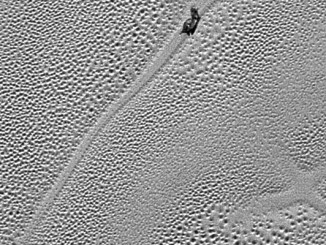
‘X’ marks a curious corner on Pluto’s icy plains
“X” marks the spot of some intriguing surface activity in the latest picture of Pluto returned from NASA’s New Horizons spacecraft. This image from the Long Range Reconnaissance Imager (LORRI) extends New Horizons’ highest-resolution views of Pluto to the very centre of Sputnik Planum, the informally named icy plain that forms the left side of Pluto’s “heart” feature.

No. 1 New Horizons at Pluto
The long-awaited fly-by of Pluto by the New Horizons spacecraft, on 14 July 2015, was an event 85 years in the making, following Pluto’s discovery by Clyde Tombaugh in 1930. Since then, Pluto has gone from planet to dwarf planet, but despite protestations from the New Horizons team, its reclassification never really changed the mission or the importance of what it would find at Pluto.
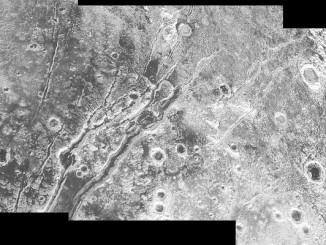
New findings on Pluto and its moons from New Horizons
Five months after NASA’s New Horizons spacecraft flew past Pluto, knowledge about this distant system continues to unfold, yet the spacecraft is less than halfway through transmitting data about the Pluto system to Earth. New Horizons science team members presented the latest findings at the American Geophysical Union (AGU) autumn meeting in San Francisco.
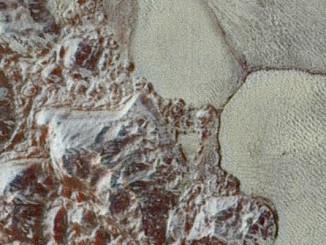
Pluto’s close-up, now in colour
This enhanced colour mosaic combines some of the sharpest views of Pluto that NASA’s New Horizons spacecraft obtained during its 14 July flyby, revealing features smaller than half a city block on the dwarf planet’s surface. The wide variety of cratered, mountainous and glacial terrains seen here gives scientists and the public alike a breathtaking, super-high-resolution colour window into Pluto’s geology.


New Horizons returns first, best images of Pluto
It is almost five months since New Horizons’ epic encounter with Pluto, but the captured images and data will stream back to Earth across 3 billion miles of interplanetary space for a further 11 months. The first in a series of the best close-ups of the dwarf planet that humans may see for decades have been released, obtained when the spacecraft was just 15 minutes before closest approach during the 14 July flyby.
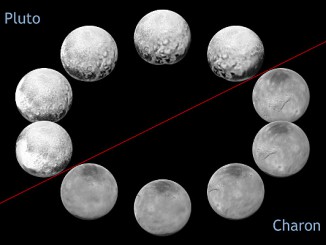
A day on Pluto, a day on Charon
Pluto’s day is 6.4 Earth days long. The dwarf planet’s largest moon, Charon, also rotates once every 6.4 days as the two worlds are tidally locked to each another. This sequence of images from the Long Range Reconnaissance Imager (LORRI) and the Ralph/Multispectral Visible Imaging Camera on NASA’s New Horizons spacecraft shows us full rotations of the two bodies.
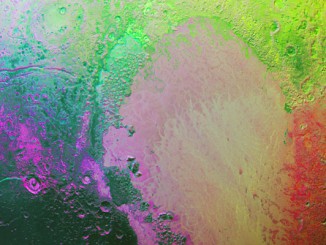
Psychedelic Pluto
NASA’s New Horizons scientists made this false colour image of Pluto using a technique called principal component analysis to highlight the many subtle colour differences between Pluto’s distinct regions. The image data were collected by the spacecraft’s Ralph/MVIC colour camera on 14 July at 11:11 UTC, from a range of 22,000 miles (35,000 kilometres).
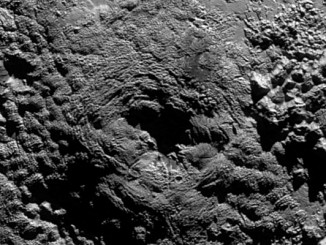
New Horizons finds possible ice volcanoes on Pluto
From possible ice volcanoes to twirling moons, NASA’s New Horizons science team is discussing more than 50 exciting discoveries about Pluto at this week’s 47th Annual Meeting of the American Astronomical Society’s Division for Planetary Sciences. The two cryovolcano candidates are large features measuring tens of miles across and several miles high.
